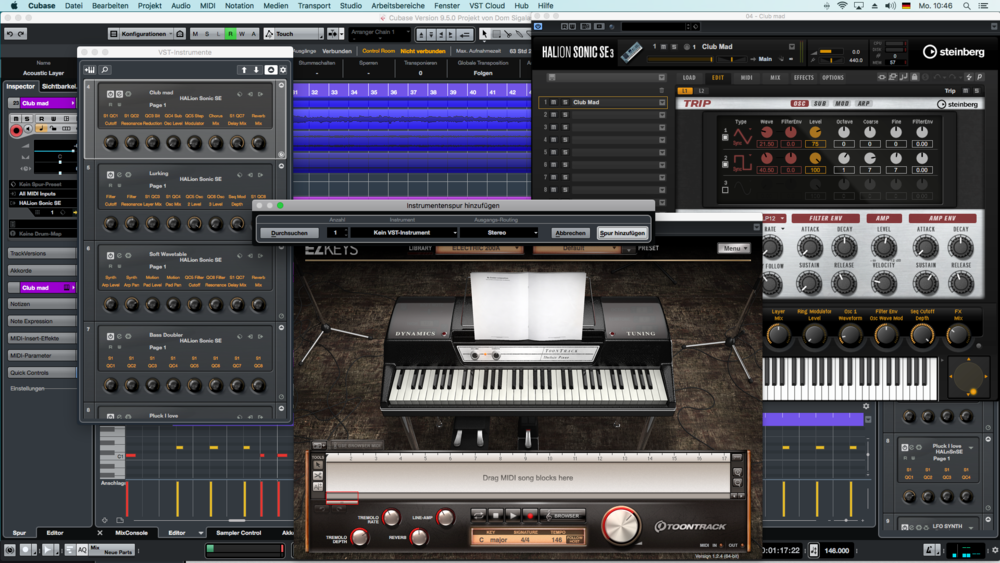8. Working within CPU Limitations
Software instruments neatly illustrate some of the key differences between software and hardware-based studios. With a hardware synth you can program a sound, edit it as much as you like, add effects, filters and modulation, and assuming its multi-timbral, then you can do this with (for example) 16 different sounds simultaneously, and they will all sound for as long as you like, up to the specified maximum polyphony. With a software synth though, you may well find that the more you edit and the more effects you add, the closer your CPU meter gets to 100%, and perhaps as you add a few more complex sounds to the mix and a bunch of extra notes, you stray into your CPUs red zone and glitching occurs. Hardware synths generally work perfectly within the confines of their specification, but software synths share the available power of a complicated machine thats simultaneously being used for all sorts of other tasks. The flip side is that if you want more notes out of a hardware synth, you have to buy another one, whereas with software instruments you can just load up another instance and instantly have twice as many sounds available to you, and you can keep doing this to the computers (albeit continually varying) limit - swings and roundabouts!
To maximise the advantages of software instruments, its important to work within the limitations of your system. One way to save on CPU power is to commit your software instruments to hard disk - once youve created your MIDI arrangement playing your plug-in software synth, you can record the synth as an audio track. This enables you to unload the synth and free-up CPU power for something else - like more synths! The relationship between MIDI and audio tracks in recording software can become a little confusing, especially as the audio from your MIDI software synth is mixed alongside audio tracks. However, the beauty of MIDI tracks is that the notes are not set in stone - the performance is completely editable and if you record the output of the synth as audio then all that editing power is taken away. So, do you commit the synth track to audio to save on CPU or keep it as MIDI to retain the ability to edit and tweak? Software companies have tackled this dilemma by developing the freeze function which gives you the best of both worlds. At the push of a button, the software creates a temporary audio track of the software synths output, and turns off the synth, thereby freeing up the CPU. However, the synth isnt unloaded, instead its merely disabled and retains all the current settings. The MIDI track is also kept connected to the temporary audio track. If you then find that you need to re-edit the synth track, you can unfreeze, and the synth will come back online with the MIDI track ready to go. Perform your edit, re-freeze, and you free up the CPU again. Some software even lets you make edits to the MIDI track that are automatically reflected in the temporary audio track - these types of arrangements enable you to run far more software instruments than your system would normally be capable of.

As CPU speeds increase, then in theory you'll be able to run more and more software instruments, although in practice it often seems that every time you upgrade your CPU, an even more complex synth arrives that needs twice as much processing power, and so it goes on!



